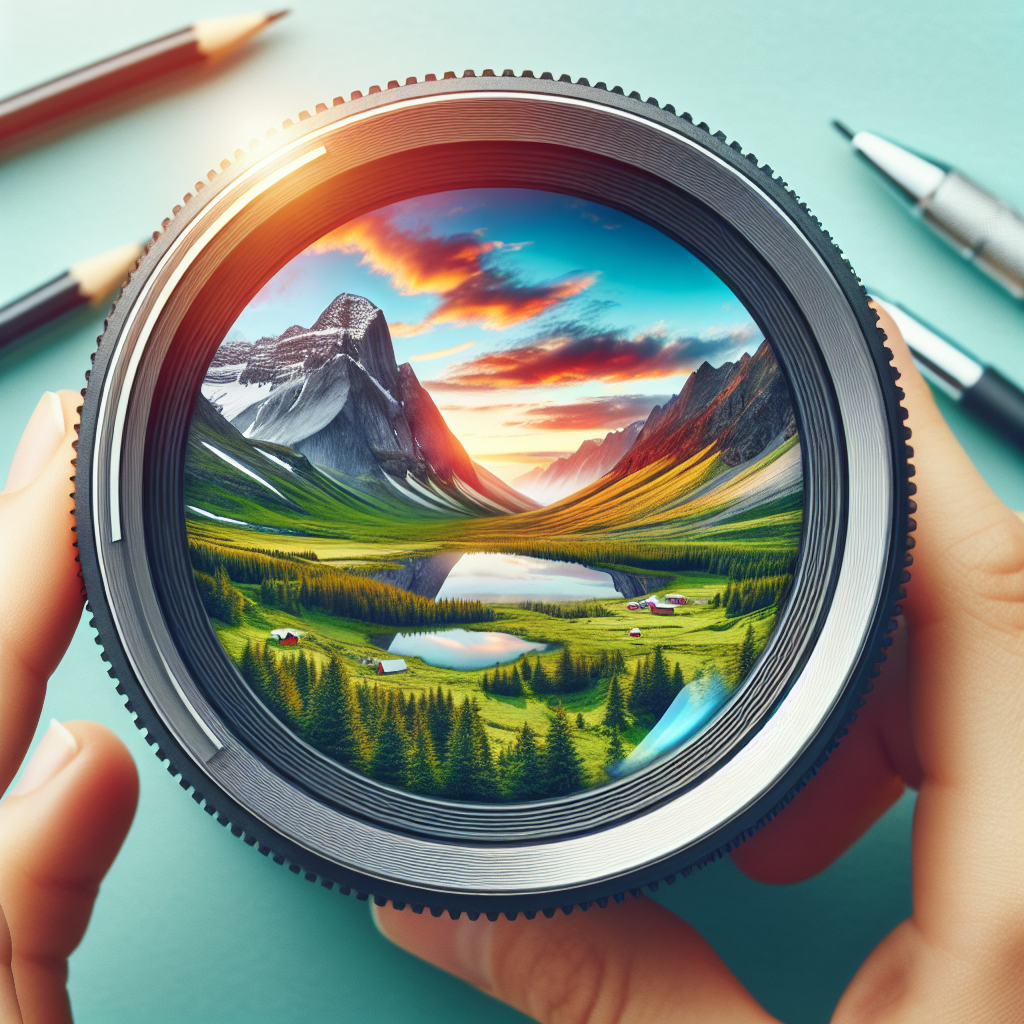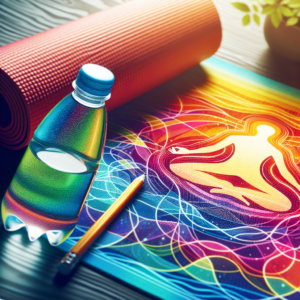If you’re an avid traveler who loves capturing the beauty of your destinations through photography, then this article is for you. In this piece, we will explore various ways in which you can enhance your photography skills specifically for travel photography. From mastering composition techniques to understanding lighting and post-processing, we will provide you with valuable tips and tricks to help you take stunning travel photographs that truly capture the essence of your adventures. So grab your camera, pack your bags, and get ready to take your travel photography to the next level!
- Understanding the Basics of Photography
- Preparing Your Gear for Travel
- Researching Your Destination
- Planning and Timing Your Shots
- Mastering Composition Techniques
- Capturing People and Taking Portraits
- Exploring Different Genres of Travel Photography
- Editing and Enhancing Your Photos
- Staying Inspired and Continuously Learning
- Ethical Considerations in Travel Photography
Understanding the Basics of Photography
Understanding camera settings
When it comes to photography, understanding the settings on your camera is crucial. By familiarizing yourself with features such as aperture, shutter speed, ISO, and white balance, you can have more control over the final outcome of your images. Take the time to read your camera’s manual and experiment with different settings to see how they affect your photos. As you become more comfortable with your camera, you’ll be able to make adjustments on the fly to capture the perfect shot in any situation.
Mastering composition techniques
Composition plays a vital role in photography, as it determines how elements in a frame work together to create a visually appealing image. One important technique to master is the rule of thirds, which involves dividing your frame into nine equal parts using two horizontal lines and two vertical lines. By placing points of interest at the intersections or along the lines, you can create a more balanced and engaging composition. Additionally, using leading lines, diagonals, and balancing elements can add depth and visual interest to your photos.
Learning about lighting and exposure
Understanding how light works and its impact on your photographs is essential for capturing stunning travel images. Different lighting conditions can dramatically affect the mood and atmosphere of your shots. Take the time to learn about natural lighting, such as capturing the warm tones of a sunrise or sunset, or using backlit situations to create silhouettes. Additionally, learning about exposure and how to adjust your camera settings to properly expose your subject can make a significant difference in the quality of your images.
Exploring different types of photography
Photography is a vast field with various genres to explore. While you may have a particular interest in travel photography, it’s beneficial to explore other types as well. Whether it’s architectural photography, street photography, landscape and nature photography, or food and culinary photography, each genre offers its unique challenges and techniques. By broadening your horizons and experimenting with different types of photography, you can discover new perspectives and techniques that will enhance your travel photography skills.
Preparing Your Gear for Travel
Choosing the right camera and lenses
When it comes to travel photography, choosing the right camera and lenses is essential. Consider the type of photography you’ll be doing, the level of portability you desire, and your budget. DSLR cameras are popular among travel photographers for their versatility and image quality, but mirrorless cameras are also a great option due to their compact size. Additionally, selecting the right lenses, such as a wide-angle lens for landscapes or a zoom lens for capturing distant subjects, can greatly enhance the variety and quality of your shots.
Packing essential accessories
In addition to your camera and lenses, there are several essential accessories you should consider packing for your travel photography adventures. These may include extra batteries and memory cards, a sturdy tripod for stable shots, lens filters for controlling light and enhancing colors, a remote shutter release for self-portraits or long exposures, and a camera bag or backpack for convenient and safe storage. Having these accessories on hand will ensure that you’re prepared for any photographic opportunity that comes your way.
Protecting your gear while traveling
Traveling with expensive camera gear requires proper protection to prevent any damage or theft. Invest in a durable camera bag or backpack that provides ample padding and compartments to securely store your equipment. Consider using lens pouches or protective caps for added protection. If you’re traveling to rainy or humid destinations, bring along a waterproof cover or plastic bags to shield your camera from moisture. Additionally, it’s always a good idea to have insurance coverage for your gear, providing peace of mind in case of any unexpected mishaps.
Considerations for compact and smartphone cameras
While DSLR and mirrorless cameras are popular choices for travel photography, compact cameras and smartphones can also produce impressive results. If you prefer to travel light or want to remain inconspicuous, compact cameras offer a portable and user-friendly option. Smartphone cameras, on the other hand, are convenient and readily available, making them ideal for capturing spontaneous moments. Regardless of the type of camera you choose, familiarize yourself with its features and limitations, and explore apps or software that can enhance the capabilities of your device.

Researching Your Destination
Understanding the local culture and customs
Researching and understanding the local culture and customs of your destination can greatly enhance your travel photography experience. Learning about traditional practices, festivals, and social norms allows you to capture meaningful and respectful images. By being aware of cultural sensitivities, you can ensure that you are not inadvertently offending or disrespecting the local community.
Identifying iconic landmarks and landscapes
Iconic landmarks and landscapes are often top attractions for travel photographers. Research and identify these well-known sites in advance to plan your shots and find unique perspectives. While capturing the classic postcard image is satisfying, try to bring your own creative vision to these familiar subjects. Look for interesting angles, lines, or details that make your photos stand out from the crowd.
Exploring hidden gems and off-the-beaten-path locations
While iconic landmarks are a must-visit for many travelers, exploring hidden gems and off-the-beaten-path locations can provide incredible photographic opportunities. Research lesser-known attractions, local neighborhoods, or natural wonders that may not be as widely photographed. These hidden gems often offer more authenticity and a chance to capture unique and memorable images.
Learning about photography restrictions and permits
Some destinations may have specific photography restrictions or require permits for certain locations or subjects. Before traveling, research any regulations or guidelines that may apply to photography in your chosen destination. This will ensure that you can photograph freely without inadvertently violating any rules or causing any inconvenience to yourself or others.
Planning and Timing Your Shots
Creating a shot list and storyboard
Planning your shots in advance can help you make the most of your travel photography experience. Create a shot list and storyboard that outlines the specific images or scenes you want to capture. Consider researching popular photography spots or consulting travel guides for inspiration. By having a clear vision in mind, you can better allocate your time and ensure that you don’t miss any important shots.
Understanding the effects of different weather conditions
Weather conditions can greatly impact the mood and atmosphere of your photographs. Learn how different weather elements, such as sunlight, clouds, rain, or fog, can enhance or detract from your shots. Consider planning your shoot accordingly to take advantage of specific weather conditions that will complement your desired aesthetic. Remember that adverse weather can also provide unique opportunities for dramatic and captivating images.
Taking advantage of golden hours and blue hours
The golden hour, which refers to the period shortly after sunrise or before sunset, and the blue hour, which occurs before sunrise or after sunset, are magical times for photography. The soft, warm light during these hours creates a beautiful glow and long shadows, adding depth and dimension to your images. Plan your shoots around these times for breathtaking results.
Considering the impact of seasons on your photography
The changing seasons can drastically alter the landscapes and colors of your chosen destinations. Consider the impact of seasons on the scenery and plan your travel accordingly. For example, spring may bring blooming flowers and vibrant greenery, while autumn offers stunning foliage and warm hues. By timing your travels with the seasons, you can capture the unique beauty of each time of year.

Mastering Composition Techniques
Rule of thirds and framing
The rule of thirds is a fundamental composition technique that involves dividing your frame into gridlines and placing points of interest along the intersections. This technique helps create a visually pleasing composition that draws the viewer’s eye. In addition to the rule of thirds, mastering framing techniques can also enhance your images. Use elements in your surroundings, such as archways, windows, or trees, to frame your subject and add depth to your composition.
Leading lines and diagonals
Leading lines and diagonals are powerful composition tools that can guide the viewer’s eye through your image. Utilize natural elements, such as roads, pathways, or fences, or man-made structures like bridges or railings, to create leading lines that draw attention to your subject. Diagonals can add a sense of dynamism and energy to your composition, creating a more engaging and visually appealing photograph.
Using foreground, middle ground, and background
A well-composed photograph often includes elements in the foreground, middle ground, and background to create depth and add interest. Explore your surroundings to find objects or subjects that can occupy these different layers of your composition. Whether it’s a rock in the foreground, a tree in the middle ground, or a mountain range in the background, each layer contributes to a more engaging and dynamic photograph.
Balancing elements and creating symmetry
Balancing elements in your composition is essential for creating harmonious and visually pleasing images. Ensure that the weight of objects or subjects is distributed evenly throughout the frame. This can be achieved through symmetrical compositions, where the elements on one side mirror those on the other, or through asymmetrical arrangements, where different objects or subjects are strategically placed to create balance.
Capturing People and Taking Portraits
Engaging with locals and building connections
Capturing people and taking portraits can add a human element and tell stories in your travel photography. Engaging with locals and building connections can result in more meaningful portraits. Take the time to interact with the people you encounter on your travels, show genuine interest in their lives, and seek their permission before taking their photographs. Building trust and rapport can lead to more authentic and captivating portraits.
Respecting cultural sensitivities while photographing people
While photographing people, it’s essential to respect cultural sensitivities and be mindful of local customs. In some cultures, photography may be seen as intrusive or disrespectful. Before photographing individuals, especially in sacred or intimate moments, seek their consent and be receptive to their wishes. Additionally, be aware of any specific cultural practices or dress codes that may influence how you approach and capture your subjects.
Using natural light and candid moments
Natural light can be incredibly flattering in portraits, so take advantage of it whenever possible. Avoid using harsh, direct sunlight by seeking shade or diffusing the light with a reflector or diffuser. Additionally, capturing candid moments can result in genuine and spontaneous portraits. Rather than asking your subjects to pose, observe and anticipate unique moments where their genuine emotions and expressions shine through.
Posing and directing subjects for striking portraits
On occasions when posing is appropriate, provide clear directions to your subjects to capture striking portraits. Guide them through different poses or expressions that convey the mood or story you want to tell. Avoid overly stiff or unnatural poses and aim for relaxed and authentic moments. Consider incorporating elements of the environment or props to add visual interest and narrative to your portraits.

Exploring Different Genres of Travel Photography
Architectural photography
Architectural photography focuses on capturing the beauty and design of structures and buildings. Pay attention to lines, shapes, and patterns in architectural details. Experiment with various angles and perspectives to showcase the grandeur or uniqueness of the buildings you encounter during your travels. From modern skyscrapers to ancient temples, architectural photography offers endless possibilities for creative compositions.
Street photography
Street photography captures everyday life and moments in public spaces. It requires a blend of observation and anticipation to capture genuine and candid moments of people, urban landscapes, or street scenes. Embrace the vibrant energy and chaos of the streets, and be quick to capture fleeting moments. Explore different neighborhoods, markets, or festivals to capture the essence and soul of a city through your lens.
Landscape and nature photography
Landscape and nature photography showcases the beauty of the natural world. Whether it’s majestic mountains, serene beaches, or lush forests, capturing landscapes requires careful attention to lighting, composition, and timing. Scout for scenic viewpoints, follow hiking trails, or venture off the beaten path to discover hidden gems in nature. Consider using wide-angle lenses and filters to capture the grandeur of landscapes and make the most of the available light.
Food and culinary photography
Food and culinary photography has gained popularity with the rise of gastronomy and food culture. Capturing delectable dishes, vibrant ingredients, or the artistry of cooking can evoke sensory experiences for viewers. Pay attention to lighting, colors, and textures to bring out the best in the food you photograph. Experiment with different angles, props, and backgrounds to create mouthwatering images that tell the story of a destination’s culinary delights.
Editing and Enhancing Your Photos
Choosing the right software and tools
To bring out the full potential of your travel photos, it’s important to invest in the right software and tools for editing and enhancing your images. Adobe Lightroom and Adobe Photoshop are popular choices among photographers, offering a wide range of tools and features for fine-tuning your photos. Additionally, there are user-friendly alternatives and mobile apps available for editing on the go. Explore different options and find the software that best suits your editing needs.
Understanding basic editing techniques
Basic editing techniques can do wonders for optimizing your travel photos. Familiarize yourself with basic adjustments such as exposure, contrast, saturation, and highlights. By making subtle tweaks to these settings, you can enhance the overall look and feel of your images. Additionally, learn about cropping your photos to improve composition and remove distractions. Remember that the goal of editing is to enhance your images while maintaining their authenticity.
Adjusting exposure, colors, and contrast
Exposure, colors, and contrast are fundamental aspects of editing that can greatly impact the final look of your photographs. Understanding how to adjust exposure can help correct underexposed or overexposed areas, ensuring that your subject is properly illuminated. Experiment with color adjustments to enhance the vibrancy or create a specific mood in your photos. Adjusting contrast can add depth and dimension to your images, making them more visually striking.
Cropping and straightening your photos
Cropping and straightening your photos can improve composition and remove any distracting elements. Consider the rule of thirds or other composition techniques when cropping your images to create a more balanced and visually pleasing composition. Straighten crooked horizons or lines that may distract from the main subject. These simple adjustments can make a significant difference in the overall impact of your photographs.
Staying Inspired and Continuously Learning
Following photography blogs and websites
To stay inspired and stay up to date with the latest photography trends and techniques, follow photography blogs and websites. These platforms often share valuable tips, tutorials, and showcases of exceptional photography. Explore different genres and styles of photography to broaden your perspective and find inspiration for your own work. Engage with the photography community by leaving comments and participating in discussions.
Participating in photography contests and challenges
Photography contests and challenges can motivate you to continue improving your skills and push your creative boundaries. Look for local or international photography contests that align with your interests, whether it’s travel photography, landscapes, portraits, or even mobile photography. Participating in these competitions can not only give you a chance to showcase your work but also provide valuable feedback and recognition.
Joining photography communities and forums
Connecting with like-minded photographers can be invaluable for your growth and learning. Join online photography communities and forums where you can interact with fellow photographers, share your work, and receive constructive criticism. These communities often organize meet-ups, workshops, or photo walks where you can learn from experienced photographers and discover new photography locations.
Attending workshops and photography tours
Attending photography workshops and tours can provide hands-on learning experiences and the opportunity to explore new destinations with expert guidance. Look for workshops or tours that offer specialized instruction in travel photography or the genres you’re interested in. These immersive experiences allow you to learn from experienced professionals, refine your skills, and capture stunning images in unique locations.
Ethical Considerations in Travel Photography
Respecting privacy and seeking consent
Respecting the privacy of individuals you photograph is of utmost importance. Always seek permission before capturing someone’s image, especially in intimate or vulnerable moments. Be mindful of cultural norms and sensitivities regarding photography, and respect any requests from your subjects to not be photographed. Obtaining consent not only demonstrates respect and professionalism but also allows you to build a connection with your subjects.
Preserving cultural heritage and traditions
When photographing cultural heritage sites and traditions, prioritize the preservation and respect of the subject matter. Be aware of any restrictions or guidelines regarding photography in these areas, and follow them diligently. Avoid any actions that could potentially harm or damage the cultural heritage or disrupt ongoing traditions. Treat these sites and traditions with reverence and capture them in a manner that promotes their significance and beauty.
Avoiding exploitation or misrepresentation
It’s crucial to avoid exploiting or misrepresenting the people and places you photograph. Use your photography as a means of storytelling and representation that respects the dignity and uniqueness of your subjects. Be cautious of creating stereotypes or reinforcing biased narratives through your imagery. Reflect on the impact your photographs may have on the communities you photograph and strive for authenticity and integrity in your portrayal.
Supporting local communities and causes
Travel photography presents opportunities to support local communities and causes. Consider ways in which your photography can contribute positively to the places and people you encounter. This may involve promoting responsible tourism, highlighting local businesses, or supporting initiatives that benefit the community. Engage in ethical and sustainable practices during your travels and use your photography as a tool for positive change and awareness.
In conclusion, enhancing your photography skills for travel photography involves understanding camera settings, mastering composition techniques, learning about lighting and exposure, exploring different types of photography, and applying these skills to capture captivating images during your travels. As you prepare your gear, research your destination, plan and time your shots, and explore various genres of travel photography, remember to stay inspired, continuously learn, and always remain ethical in your photographic endeavors. With practice, dedication, and an open mind, your travel photography skills will continue to grow, allowing you to capture unforgettable moments and share your unique perspective with the world.







